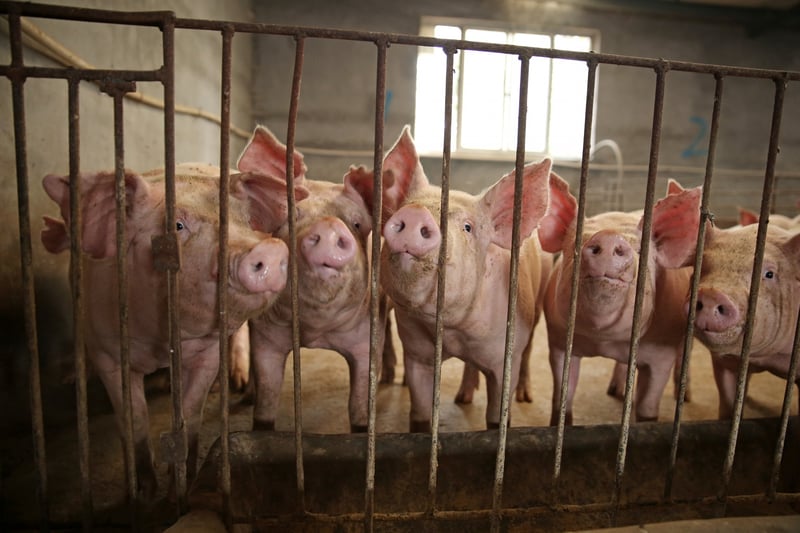
What are Antibiotic-Resistant Superbugs?
News
Antibiotics are used routinely to prop up low animal welfare practices on factory farms. Their overuse contributes to the rapid rise and spread of bacteria that are resistant to medicines used to fight infections. Resistant bacteria — called “superbugs” — are carried off farms via water, air, workers, insects, wildlife, and meat, reaching humans and causing life-threatening illness.
What does animal welfare have to do with antibiotic resistant superbugs?
Globally, roughly three-quarters of all antibiotics sold each year are marketed for use in farm animals, rather than humans. This is because for decades, factory farms have relied on providing animals with continuous doses of antibiotics to maintain the high densities and poor conditions in their barns, sheds, and lots.
Intense stress and crowding would naturally hinder the animals’ growth and development, and make them susceptible to disease and infection. But, including regular doses of antibiotics in the feed and water for entire herds or flocks, in addition to injecting drugs at various stages throughout their development, is a low-cost way to keep the highly-stressed, immune-compromised animals alive and growing at a fast rate.
When regularly exposed to low doses of antibiotics, the bacteria on farms that survive develop the ability to continue fighting not only the specific drug, but other drugs like it. Bacteria reproduce rapidly, passing resistance traits on to the next generation and can even share resistance with new bacteria they interact with.
Why do we need to pay attention to antibiotic resistance?
The problem of irresponsible use of antibiotics in farmed animals is acknowledged by the World Health Organisation (WHO), the Food and Agriculture Organisation of the United Nations (FAO), and the World Organisation for Animal Health (OIE).
The United Nations considers superbugs one of the biggest global public health concerns of the 21st century. Resistant organisms kill 1,600 Australians annually and if nothing is done, it will steadily get worse until 2050, when deaths from currently treatable infections will overtake total cancer deaths. Globally, experts predict that if current practices are allowed to continue, 10 million people will die each year from resistant infections by 2050.
Antibiotic resistant bacteria also travel through the food supply chain. Testing by World Animal Protection in 2019 found bacteria resistant to critically important medicines were present on pork products purchased from prominent supermarkets in the United States, Thailand, Spain and Brazil.
How does improving animal welfare help fight superbugs?
Moving to high animal welfare systems can help reduce use of anitbiotics. Farmed animals in high welfare systems have reduced stress and improved immunity, and therefore more natural resilience to disease.
For example, the pig farming industry in Sweden weans piglets from their mothers at a minimum of 28 days after birth (compared to at around 18 days in the United States). This results in improved immunity and robustness for the pigs and leads to roughly 100-times fewer antibiotics being used compared to other European countries.
Another example is the use of high welfare chicken breeds. These breeds grow slowly, allowing for substantially lower antibiotic use compared with intensive systems using fast-growing breeds.
This is why ending factory farming and shifting to higher welfare farming practices is not only critical to animal welfare, but also to solving the antibiotic resistance public health crisis.
This is why ending factory farming and shifting to higher welfare farming practices is not only critical to animal welfare, but also to solving the antibiotic resistance public health crisis.